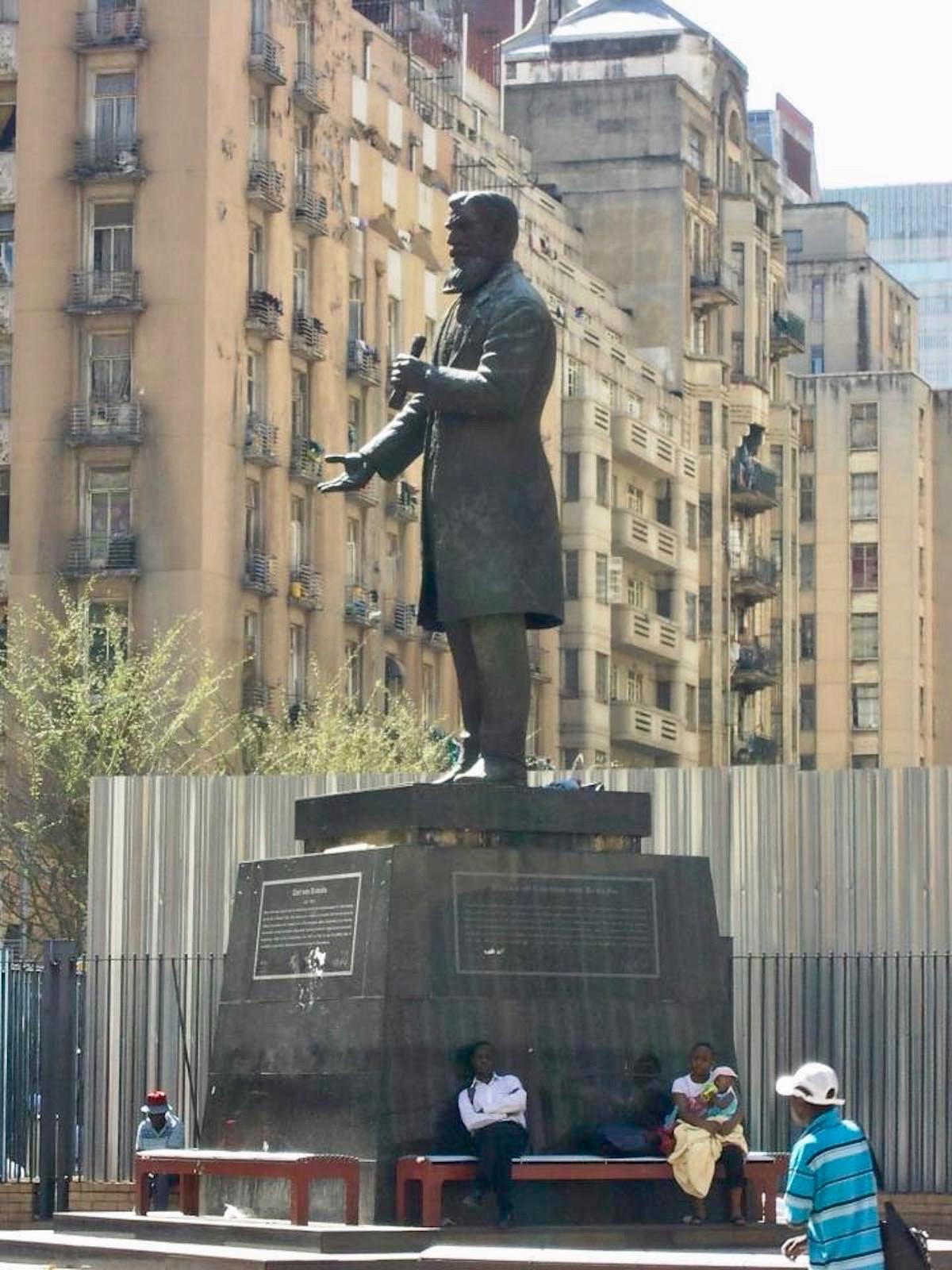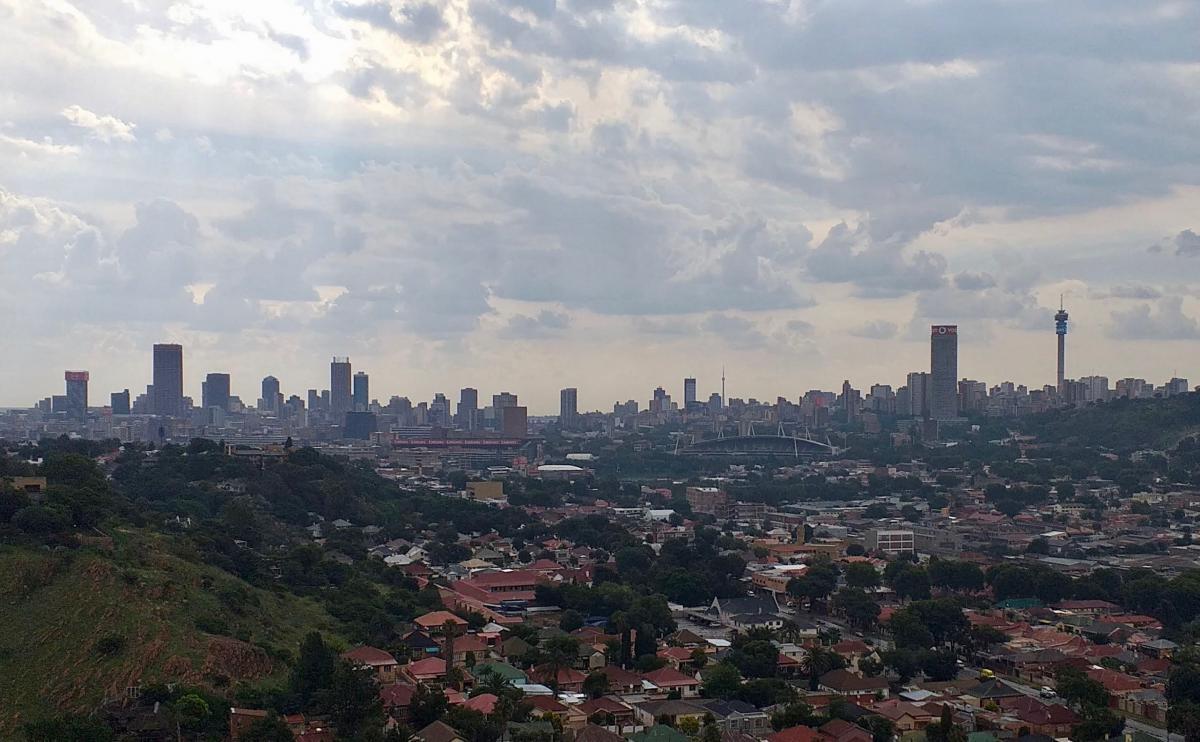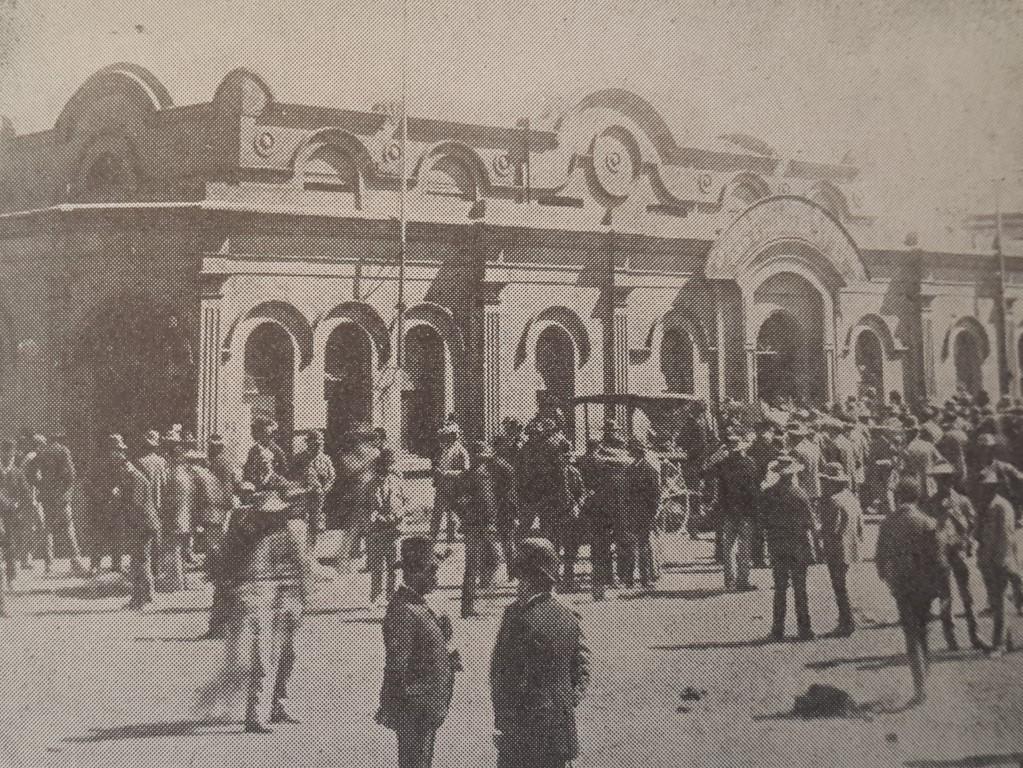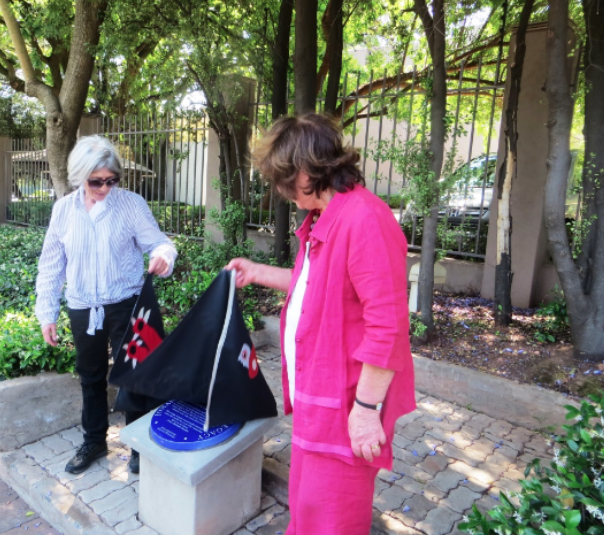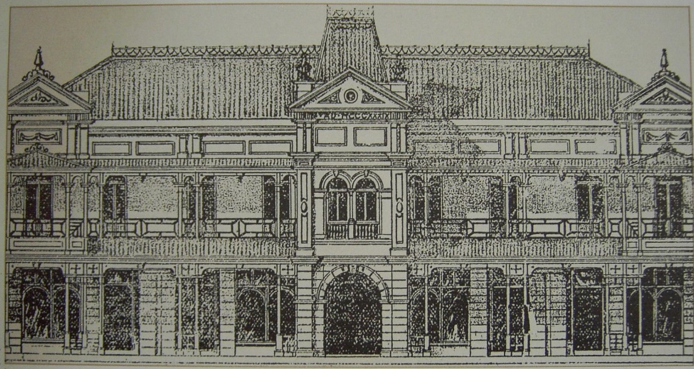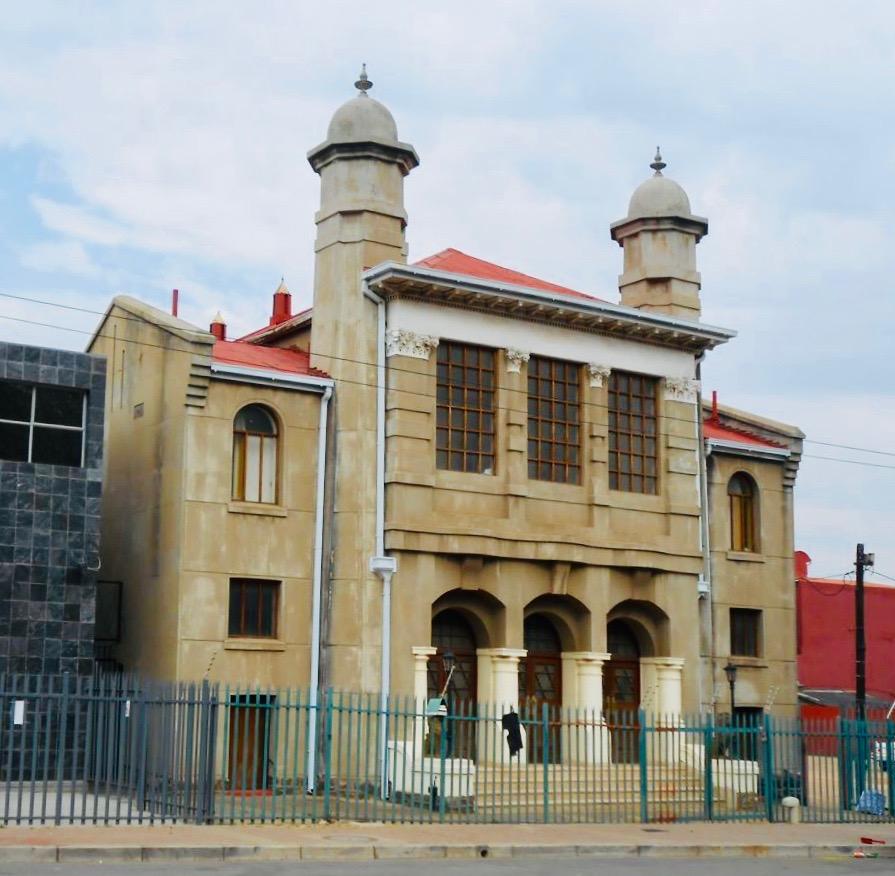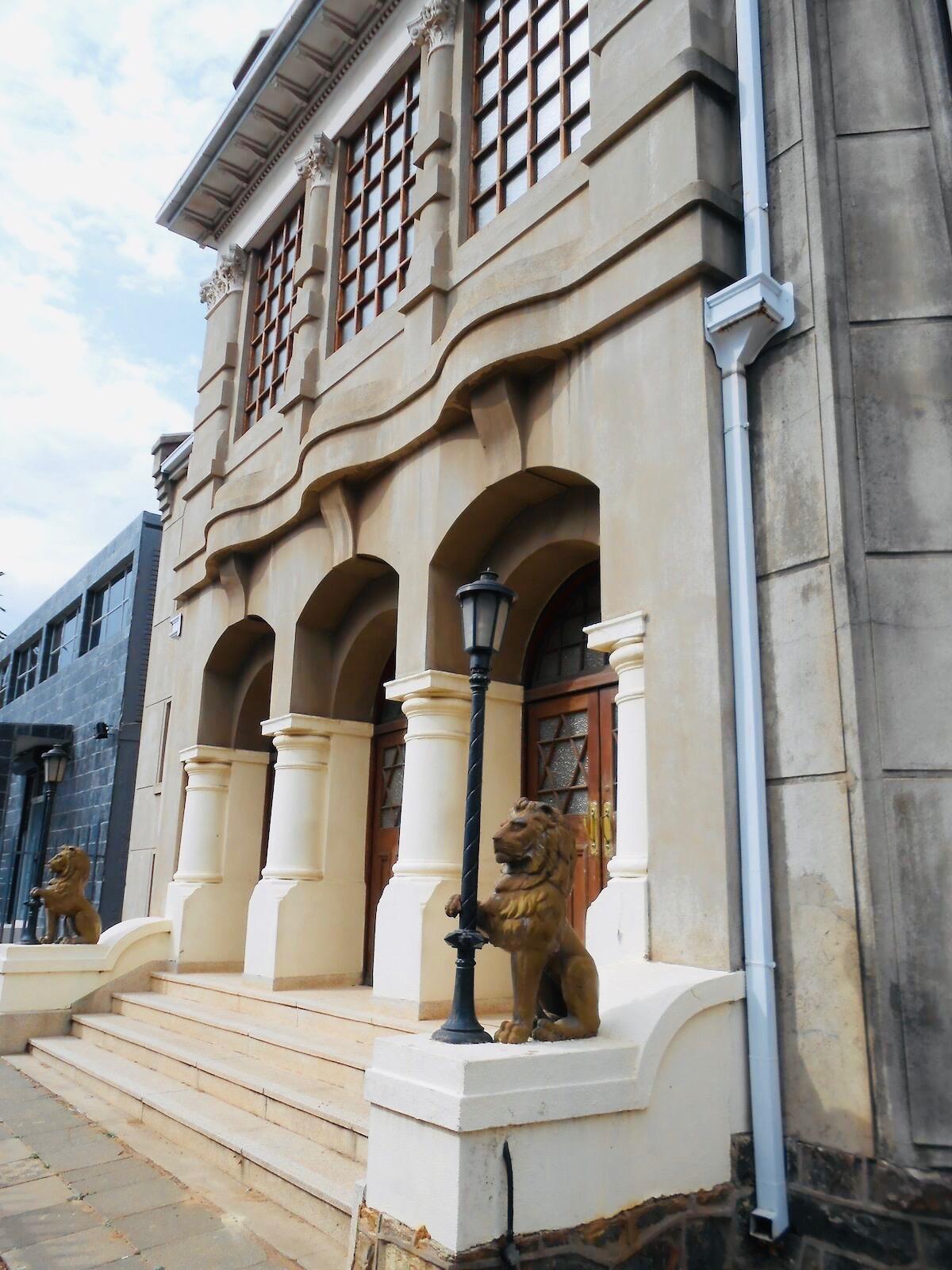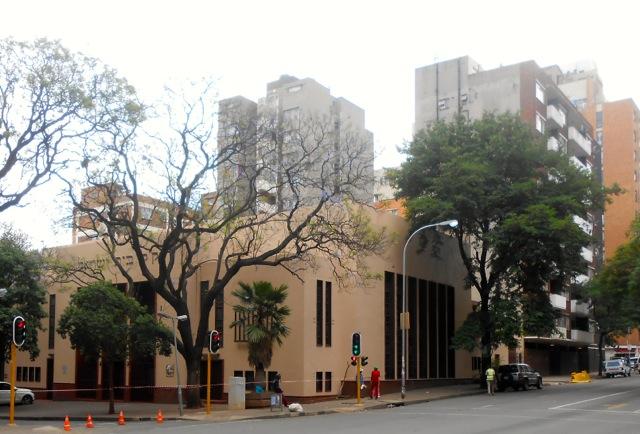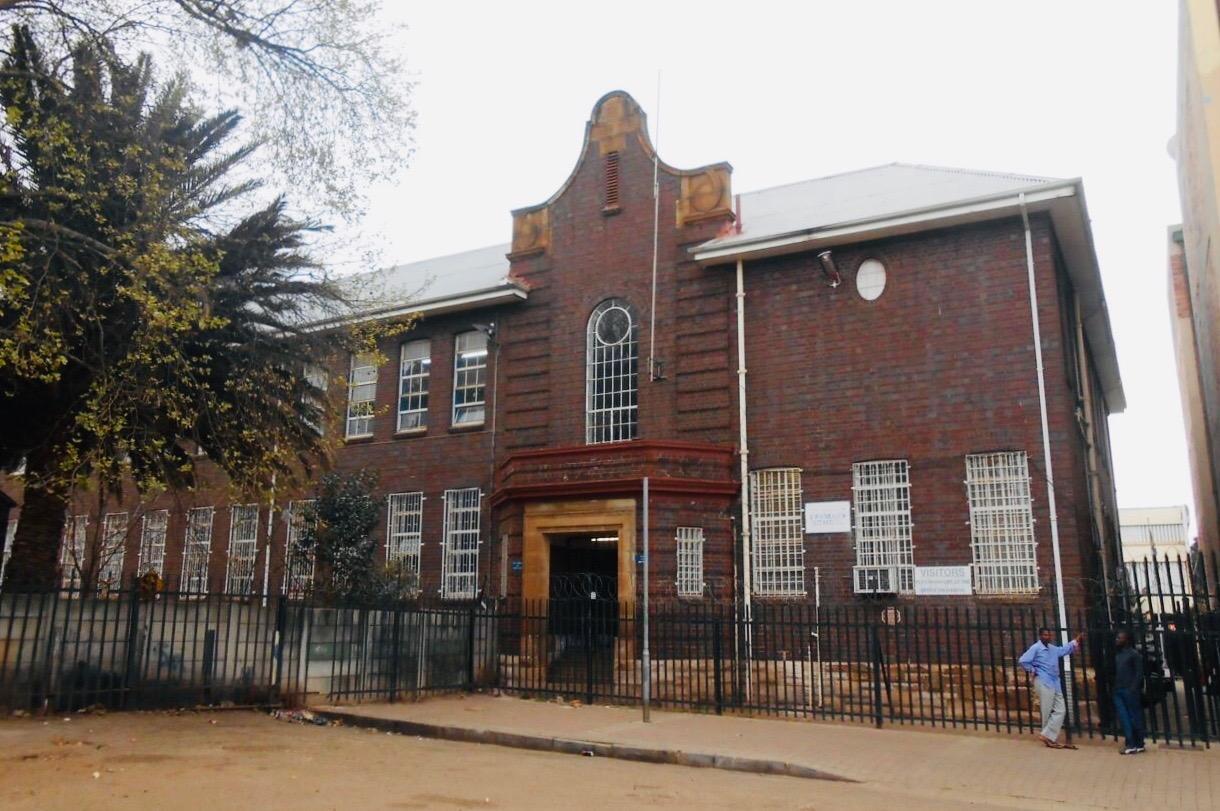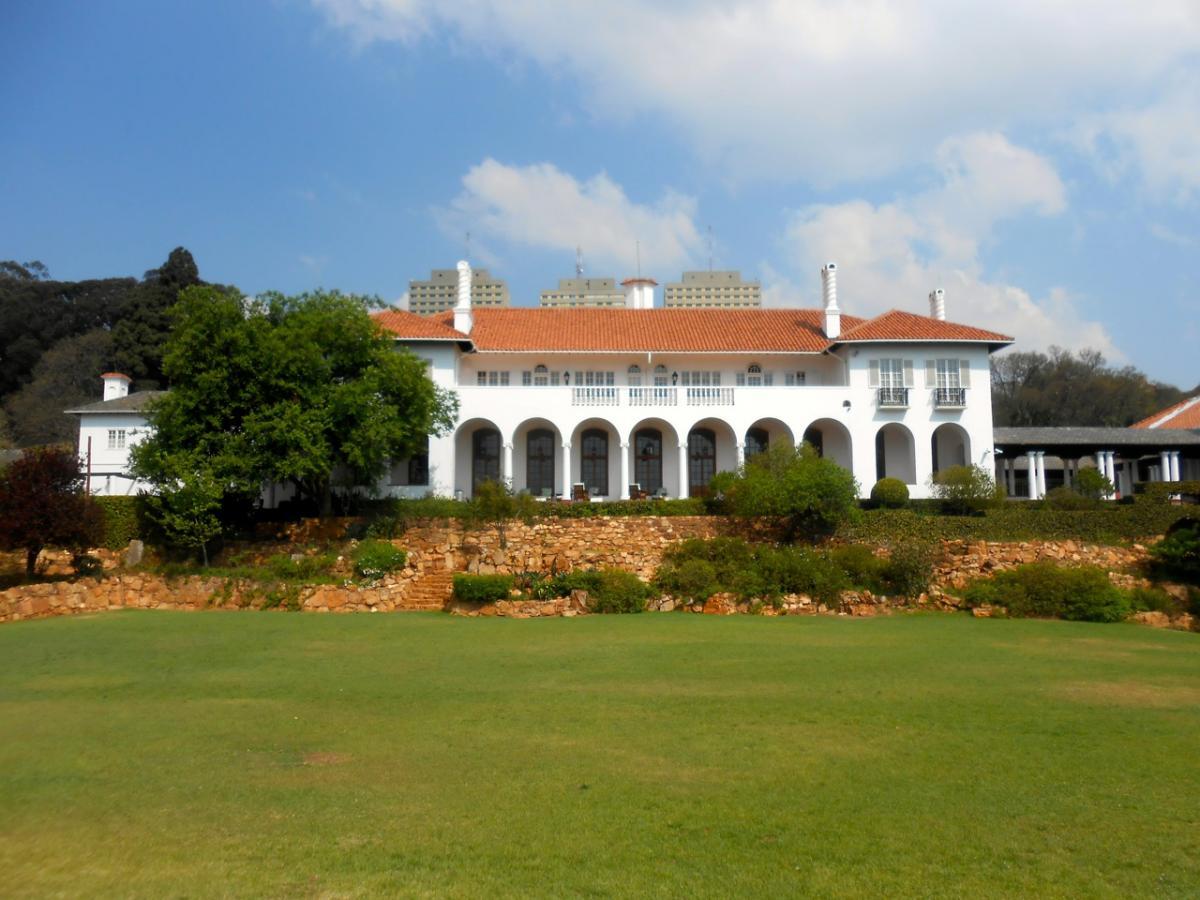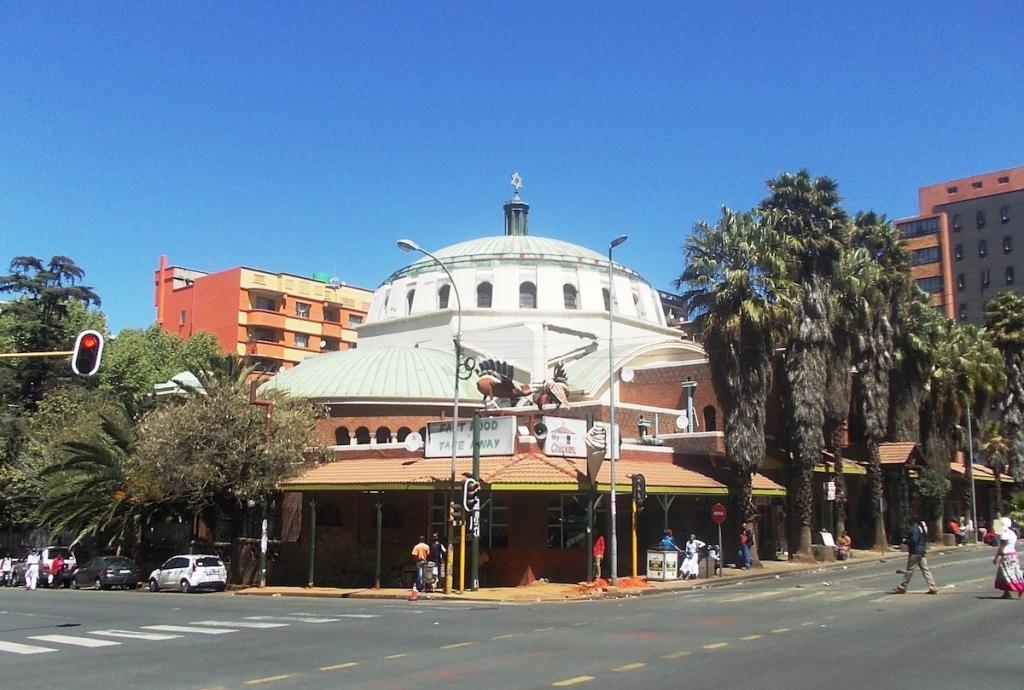
Disclaimer: Any views expressed by individuals and organisations are their own and do not in any way represent the views of The Heritage Portal. If you find any mistakes or historical inaccuracies, please contact the editor.
In the article below, journalist Lucille Davie reveals some of the history of the Jewish Community in Johannesburg. The article was originally published on the City of Johannesburg's website on 2 February 2007. Click here to view more of Davie's work.
Jews first settled in Johannesburg a year after the town was proclaimed. Public digging in Joburg was opened by Carl von Brandis, who read a proclamation written by President Paul Kruger on 20 September 1886.
Statue of Carl von Brandis in the Joburg CBD (The Heritage Portal)
This year marks 120 years since the Jewish community was first established in the town. Wendy Kahn, national director of the South African Jewish Board of Deputies (SAJBOD), says that the 120th anniversary “is a meaningful anniversary for the Jewish community as in Jewish tradition, based on Genesis 6.3, the number 120 always represents a coming of age and completion”. Living for 120 years indicates a complete lifespan, symbolising fulfilment, according to Genesis.
Over the past 120 years, explains Kahn, thousands of Jews from around the world have settled in Johannesburg. “They have been intimately bound up with the history of Johannesburg from its very establishment, and remain so as the city continues to progress confidently into its second century.”
Although Jews only arrived in the city a year later, by 21 September 1887 Rabbi Joel Rabinowitz conducted a funeral for a man killed in an accident at Langlaagte, according to Anna Smith in Johannesburg Firsts.
There were enough Jews in the city in 1887 to conduct a Rosh Hashanah (new year), held at the first Rand Club in the town centre, although generally Jews were prohibited from becoming members of the club.
Over its history Johannesburg has had 94 mayors. Twenty-two of them were Jewish. The city’s first Jewish mayor was Harry Graumann, in office from 1909 to 1910.
“We take pride in our civic involvement,” says David Sacks, associate director of the SAJBOD. “The Jewish community has been very much involved in the city.”
The Jewish community in the city numbers 50 000 these days; the total number of Jews in the country is 80 000. Over the past 30 years there has been steady emigration, as with other groups. Thirty years ago there were 120 000 Jews in South Africa.
“Johannesburg soon established itself as the largest Jewish centre in southern Africa, says Kahn. “Today, Johannesburg Jewry is served by a wide-ranging network of communal organisations that has earned it an international reputation as a model Jewish Diaspora community.“
Jewish immigrants from Lithuania, Poland and Latvia settled in Johannesburg. Several of the first Randlords were Jewish – Alfred Beit, Lionel Phillips, Barney Barnato, Solly Joel, George and Leopold Albu, Max Michaelis, and Sammy Marks.
Smaller prospectors were Leo Rosettenstein, who gave his name to Rosettenville; and Isaac Gundelfinger, who arrived at Ferreira’s Camp in 1887, according to Naomi and Reuben Musiker’s A concise historical dictionary of greater Johannesburg.
Property developers included brothers Samuel and James Harris Goldreich, who helped develop Hillbrow, Regent’s Park and Wanderers View. Max Langermann has left his legacy in Kensington, with the naming of the Langermann Kop.
The iconic view of the Joburg skyline from Langermann Kop (The Heritage Portal)
Supportive community
To help those first immigrants, a welfare body was established in 1887, called Chevra Kadisha, translated as the Jewish Helping Hand and Burial Society. It still exists, and continues to serve the Jewish community together with a range of other welfare institutions – retirement homes, free-loan societies, medical rescue, and bereavement counselling.
The Musikers record that by 1890 there were three main congregations in the town: the Witwatersrand Old Hebrew Congregation, the Johannesburg Hebrew Congregation, and the Orthodox Hebrew Congregation.
A large segment of the first Jewish immigrants were traders, craftsmen and small-time entrepreneurs.
The professions were established quickly. By 1897 15 of the 110 doctors in the town were Jewish. The first pharmacy was established by Caleb Lawrence in a tent. By 1898 there were 10 Jewish chemists. Jewish lawyers set up chambers in the town too.
Jews were instrumental in establishing the Johannesburg Stock Exchange. And Jews have played a role in several top corporations: Premier Milling, Tiger Oats, OK Bazaars, Liberty Life and the South African Breweries.
First Johannesburg Stock Exchange (Johannesburg Saga)
Publications like the South African Jewish Report and Jewish Affairs are published in Joburg.
Jews have been prominent in the anti-apartheid movement – Helen Suzman is the most well known. Ray Alexander, Arthur Goldreich, Harold Wolpe, Rusty Bernstein and Eli Weinberg were well-known communists fighting for liberation from apartheid.
The unveiling of a blue plaque on Eton Road commemorating Helen Suzman (Kathy Munro)
Building synagogues
It wasn’t long before the early Jewish community had built a synagogue, opened in President Street in 1889. Another synagogue, known as the Park Street Synagogue, was built on the corner of De Villiers and Joubert Streets, near the Park Street Railway Station. It was inaugurated by President Paul Kruger, such was the status of the Jewish community in the town.
Before 1889, Jewish services were held in the Rand Club, the town's largest venue at the time, big enough to accommodate the 500 worshippers.
Sketch of the Rand Club circa 1890 (The Star)
The Park Street Synagogue was sold in 1912 and demolished, to make way for the new railway station. The Great Synagogue in Wolmarans Street (see main image) was completed in 1914 and served the community until 1995, when escalating crime in the area and lack of parking drove the congregants into the suburbs.
The Great Synagogue is a magnificent structure, a significant contribution to the city’s mix of architectural styles. Its soaring domed roof, supplemented by four supporting half domes, rises into the sky, and holds many happy memories for several generations of Jews. It seated 1 400 people.
The Great Park Synagogue was opened in Oaklands in 2000, with the seats, chandeliers, carved wooden notice boards, and the bimah (pulpit) from the Great Synagogue. It is a small-scale replica of the original.
Beit Street
For many generations immigrant Jews used to make their way to Beit Street, a supportive Jewish enclave in Doornfontein. Beit Street used to be the commercial hub of the suburb, crowded with kosher butcheries, shoemakers, tailors, blacksmiths, carpenters and barbers, interrupted by bicycles, horses and carts or trams making their way down the middle of the street. Hawkers and pedlars crowded the pavements, with live chickens, eggs, ice and coal on sale.
It was a richly-textured, inspired community, but by the end of the 1960s the 22 000-odd members had started to move further north into Yeoville and Berea, then north again, with a large Jewish community living in Glenhazel these days.
There were originally seven shuls in the suburb. The Lions Shul in Beit Street is the only active synagogue left.
Lions Shul Doornfontein (The Heritage Portal)
Temple Israel was built in 1936 in Paul Nel Street in Hillbrow. The synagogue is the mother shul of the Johannesburg Jewish Reform Congregation. In Joburg there are only three reform congregations: Temple Israel, Temple Emmanuel in Oxford Road, and Temple Bet David in Sandton.
Temple Israel (The Heritage Portal)
Education
Several Jewish schools were built, and one, the Jewish Government School, now the IH Harris Primary School in Davies Street, Doornfontein, still goes strong. Yiddish used to be the only language heard in the playground.
IH Harris Primary School (The Heritage Portal)
Nowadays there are three King David primary and two King David high schools scattered around the suburbs. Jewish education is provided by a range of colleges, Yeshiva College being the most well known. Wits University has a department of Hebrew.
Another prominent building is Arcadia, built in 1914 by Sir Herbert Baker. It was the home of the Jewish Randlord Lionel Phillips, and his wife, Florence. In 1922 he sold it to South African Jewish Orphanage (SAJO), and for 81 years it remained an orphanage.
Villa Arcadia (The Heritage Portal)
Lucille Davie has for many years written about South Africa's people and places, as well as the country's history and heritage. Take a look at lucilledavie.co.za
Comments will load below. If for any reason none appear click here for some troubleshooting tips. If you would like to post a comment and need instructions click here.

